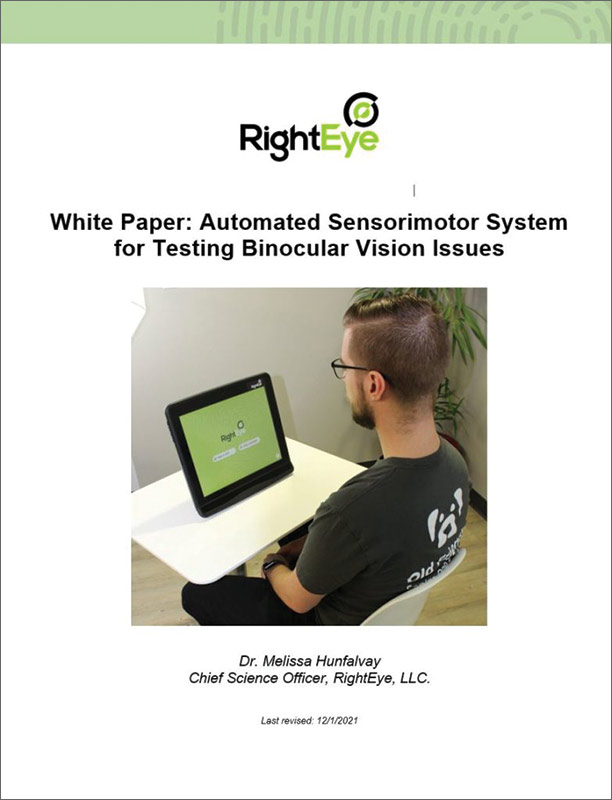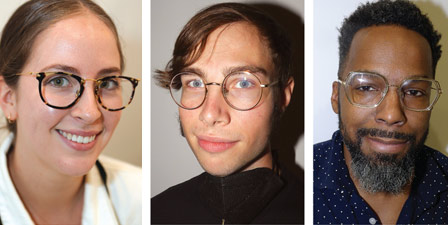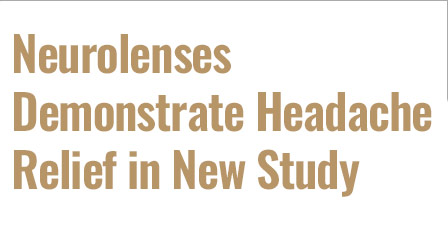
RIGHTEYE has released a new whitepaper that explains how eyecare professionals can use its Sensorimotor System to test for Binocular Vision Disorders.
Misalignment of the eyes is a common eye problem affecting approximately a third of the American population. Patient symptoms range from mild headaches to reading fatigue, and if not diagnosed early can lead to blindness in children. Of the millions suffering from Binocular Vision Disorders, more than half are symptomatic.
A Sensorimotor Exam, which names Binocular Vision Disorders, is a critical diagnostic test that all eyecare providers can perform. Until now, assessing for these conditions has been time consuming and subjective. This new automated solution has come via the intersection of science and technology.
Using RightEye eye-tracking technology to measure the movement of eyes, a basic sensorimotor screening can be done in 30 seconds. Should a person fail the screener, a comprehensive exam takes only a few minutes. RightEye Sensorimotor testing is non-invasive, fast, accurate, numbers based and reliable. Follow-up care is also available, designed to fix any issues patients are experiencing. The extended exam can be medically billed and reimbursed providing the doctor with an opportunity for potential revenue.
The purpose of RightEye’s new whitepaper is to shed light on the following:
- The prevalence and importance of finding Binocular Vision Disorders.
- Why eyecare providers may not test for Binocular Vision Disorders, as well as other limitations and challenges.
- How automated Sensorimotor exams compare to traditional exams.
- What tests are included in the RightEye Sensorimotor system and how to interpret those results and make recommendations.
- How eyecare providers can get reimbursed for the Sensorimotor exam.
Optometrists are now able to provide a solution to their patients and help change their lives in the process. Contact RightEye at righteye.com to request the whitepaper.
–Andrew Karp













